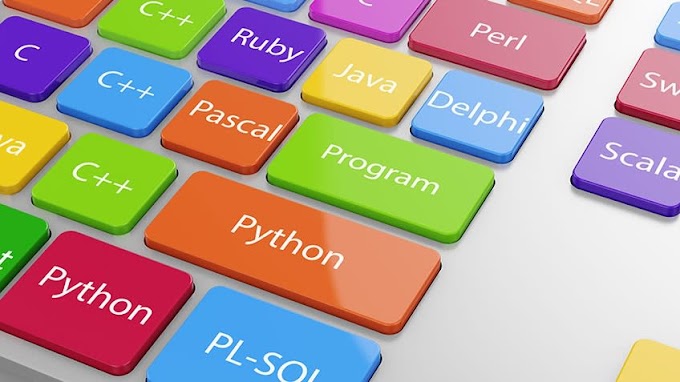On the Mac,
we have a clear abstraction of the technologies we use to build apps. We have a
"cocoa" layer that includes all the technologies needed to create the
application's user interface. The media layer contains all the tools and
technologies you need to work with media, including 2D and 3D animation, photo
and video editing.
There is also
a "core services" area where we can perform all low-level network
operations as well as string and data manipulation. "Core OS"
provides all APIs / provides functionality for all CPUs and GPUs to perform
high performance tasks. Kernel and device drivers provide support for file
systems, networking, security, interposes communication, programming languages,
device drivers, and kernel extensions. This layer also provides the Mach kernel
environment, device drivers, BSD library functions (libSystem), and other
low-level components
As you can
see, you need to learn a lot about the technologies and frameworks for
developing applications on MacOS. Note that there is no similarity to the
Windows technology stack we use.
Linux/Ubuntu
Linux is one
of the most popular OS for developers, so we want our products to reach Linux
users. I will talk about Ubuntu and Linux together. Linux typically uses Python
or other libraries for the user interface of applications. For Linux, if you
need services like 3D and 2D rendering, you'll need OpenGL. The Linux kernel
provides low-level functionality.
What is it
with web technologies?
Web
development is one of the hottest topics out there and it's no surprise that
the population of web developers is quite high. There are also many web
developers who can design and build apps with amazing UI / UX. This is due to
the fact that these technologies are standard and are used by leading companies
in the world for their production projects. There are countless frameworks to
help other teams supported by the tech giants in the industry.
In the
fast-paced world of web development, companies must cope with the rapid and
constant changes in the technology industry. This means your product needs to
be prototyped faster and available for all platforms, as well as with a single
codebase, support for more features, and excellent UI/UX. If we just depend on
traditional methods, we need a lot of capital and time to achieve this.
Instead, if we use web technologies, we can reuse many open source frameworks
and solve problems effectively.
Electron:
what it is and why to use it
Electron
helps us develop cross-platform applications using existing web technologies.
In most cases, no special skills are required to develop applications using
Electron. If you are a web developer and are interested in developing an
application using Electron, then be sure to check out the tutorials that will
follow this article in this series.
If you want
your app to be available for all the platforms we've talked about, you need to
deploy it using a variety of technologies. This is a very manual and time-consuming
process. Now, if we're talking about Electron, it's obviously a
JavaScript-based platform. Since all platforms support web technologies,
Electron helps in developing cross-platform applications easier. Popular
applications using Electron, include Visual Studio Code, Slack and Atom Editor.
Features of
The Electron
Security
You don't
need to think much when porting an existing application to Electron because the
application we are building is a desktop application and the data stays locally
on the system. This ensures the security of your data. If you need to store
data in the cloud, check to see if your cloud network has enough security
features to avoid unwanted surprises.
The Low Level
of Availability
Before you
get started, you should also check to see if all the features you provide for
your desktop application are available in Electron. In my experience, Electron
provides enough control to have advanced interactive features in your app, such
as keyboard shortcuts. It also provides low-level access to hardware and
operating system components.
availability
Developers
can get full access to all hardware-level access APIs via JavaScript / plugin.
There is no need to compromise for function if you want to upgrade to Electron.
Performance
The electron
thrives in this aspect. With proper care in development (download only what you
need) Electron can show some great performance advantages over native
applications. Electron saves a lot of time and provides more opportunities for
game or development, having a single code base for all major platforms. These
are the main problems when we deal with internal application development that
are all effectively solved with Electron.
However, many
say that the electron is very hungry for memory. I agree with this statement,
but only if you develop applications without proper care.
Code and
application management
As a product
owner, you don't need to support different teams for each platform, and you'll
be spared the hassle of re-explaining your requirements with different teams.
It will also reduce audit work to ensure that the product has the same
functionality across platforms.
As a
developer, you don't have to worry about different codebases. If you encounter
a bug on any platform, you can fix it in the code base. The error will never
show up on other platforms. However, you should still keep an eye on the OS
level functionality.
Reusability
Since we use
a single code base, this means that we can use it for both web applications and
desktop applications. We, in a sense, also reuse the base code on different
platforms, as we " code once, distribute everywhere.”
Production
The more
well-known frameworks we use; the more support we get. This in turn gives us
more open source libraries that we can reuse, and reduced production time, but
with more features.
Deploy /
Build
This is one
of the interesting aspects of the electron. There is an electronic packer
module that helps us to combine the entire code base into the appropriate
packages. Although people claim that an electron takes up a lot of memory, as I
said, an Electron needs a little care during development to avoid this.
UI/UX
With web
technologies, you are open to multiple technologies that provide great user
experience (UI) and user experience (UX) to all your users with great comfort.
Also, you can be sure that you are providing the same experience for all your
users on different platforms.
Cost and time
You will save
a lot of time and money on development because for the technology stack we use,
there are many developers who can do it for less money and achieve good
results. You can save a lot of time by using a single code base, and any
developer can work on anything.
History of
the electron
When we talk
about technology, we need to talk a little bit about the history behind it. Let
us briefly consider the history of the electron.
Electron was
founded by Cheng Zhao, during the development of the cross-platform text editor
Atom, released in July 2013. It was made open source, developed and maintained
by GitHub using C++, JavaScript, Objective C and Python. It was intended to
facilitate cross-platform development to build the atom.
Deep Dive into
The Electron
A typical
Electron application uses HTML, CSS, JavaScript, and Node.js on top of the
chromium development engine. Don't let the word chrome scare you. Chromium is
nothing to learn if you are a web developer developing browsers / client
applications. If you get access to a lot of native features, then you need to
look deeper into the Chrome engine (Chromium) for more information.
You can also
use other frameworks on top of the basic setup, such as Next.Yash, Wu.JS and
angle 5. This will make your development easier by keeping your applications
more predefined and modular, which in turn makes debugging and understanding
easier. You can also create unit test cases to ensure that changes do not break
existing functionality.










0 Comments